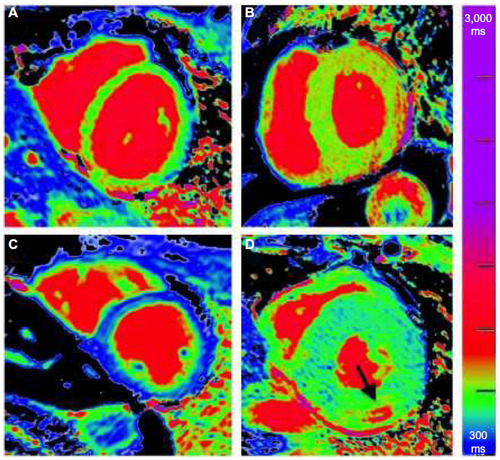Figures & data
Figure 1 T1 mapping in a healthy volunteer.
Abbreviations: ECV, extracellular volume; LV, left ventricle; MOLLI, modified Look–Locker inversion recovery; RV, right ventricle.

Figure 2 Examples of native T1 maps from a healthy volunteer using three different sequences.
Abbreviations: MOLLI, modified Look–Locker inversion recovery; SASHA, saturation recovery single-shot acquisition; ShMOLLI, shortened MOLLI.

Figure 3 Native T1 maps in the basal short axis.

Figure 4 Anderson-Fabry disease.
Abbreviations: AFD, Anderson-Fabry disease; LGE, late gadolinium enhancement; ShMOLLI, shortened modified Look–Locker inversion recovery; SSFP, steady-state free precession.

